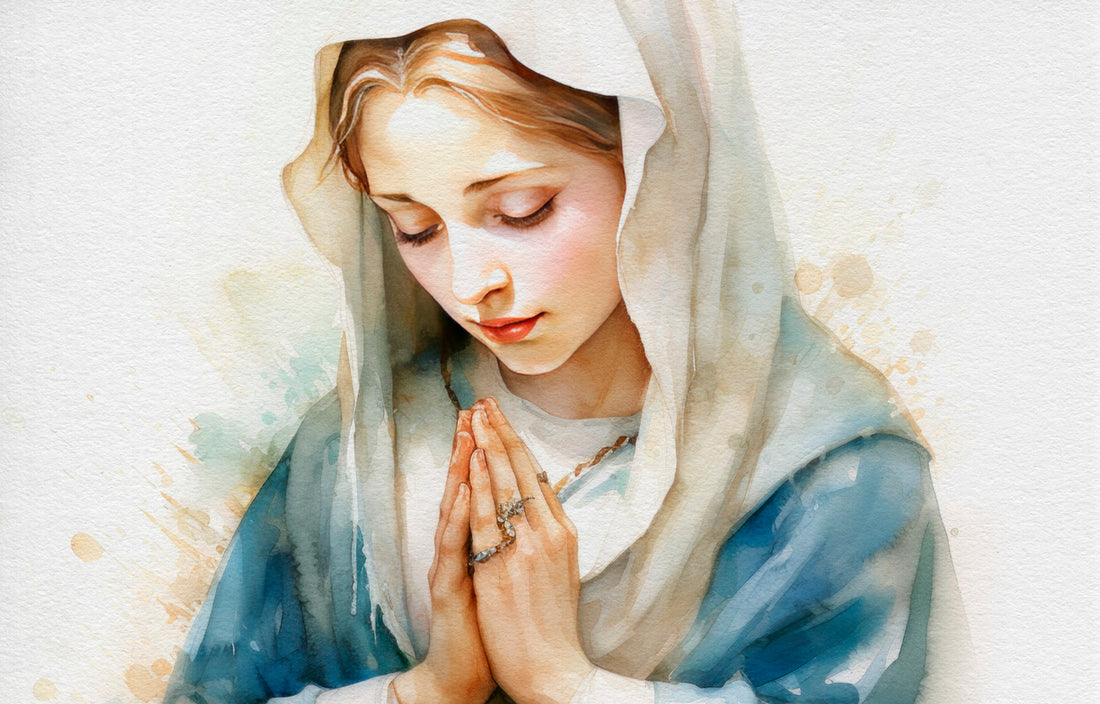The Immaculate Conception, a paramount celebration within the Catholic tradition, symbolizes the conception of the Blessed Virgin Mary devoid of original sin. This theological doctrine has perpetuated through centuries, engendering debates and commemorations, sustaining its pivotal role in the fabric of the Catholic belief system.
Meaning of the Immaculate Conception
The doctrine of the Immaculate Conception delineates the Catholic belief that the Virgin Mary, despite being conceived by her parents, remained free from the taint of original sin from the inception of her existence, thereby sanctifying her for her divine role as the mother of Jesus Christ.
Contrary to popular belief, the Immaculate Conception intricately intertwines with the conception of Mary by her parents, St. Joachim and St. Anne.
Notably absent from explicit Biblical references is the notion of Mary's Immaculate Conception. The Bible portrays Mary as an ordinary yet divinely chosen woman designated to give birth to the Messiah, Jesus Christ. While her sanctity is acknowledged, the explicit discussion about her immaculateness is less apparent.
The Immaculate Conception Feast: Tracing its Historical and Spiritual Genesis
The roots of the Catholic doctrine regarding the Immaculate Conception extend far into history, culminating in its formal declaration as a dogma of the Catholic Church in the 19th century.
The feast commemorating the Immaculate Conception received official recognition in 1854 when Pope Pius IX, on December 8th, proclaimed the dogma through the papal bull "Ineffabilis Deus" within the confines of the Sistine Chapel. This proclamation conferred official status upon an ancient Christian tradition, solidifying a belief system entrenched for centuries. Despite its celebration in the Christian East from the 6th century, it was Pius IX's edict that assimilated it into the Catholic liturgical calendar.
Pius IX deliberately chose December 8th, aligning it with the birth of the Virgin Mary and the Feast of the Nativity of Mary, initiated in the West by Pope Sergius I in the 7th century and set on September 8th. Consequently, the Immaculate Conception precedes the commemoration of Mary's Nativity by precisely nine months.
Numerous Marian apparitions, including the renowned one on February 11, 1858, in Lourdes nestled at the foot of the Pyrenees, bolstered the authenticity of this dogma. It was during this apparition that the Madonna appeared to Bernadette Soubirous, a 14-year-old, introducing herself with the revelatory words "I am the Immaculate Conception".
The Pope's Homage to the Immaculate
The Pope's public tribute to the Immaculate serves as a tangible demonstration of reverence and adoration by the Catholic Church towards Mary, acknowledging her purity and sanctity as the mother of Jesus Christ.
Annually, on December 8th, the Pope proceeds to the Spanish Steps in Rome to honor the Immaculate. During this commemorative event, he places a floral wreath at the base of the Madonna statue situated on the column of the Immaculate Conception. Only interrupted briefly during the pandemic for two years, the tradition has been reinstated since 2022.
The Feast of the Immaculate: Traditions and Celebrations
In Italy, the Feast of the Immaculate Conception holds significant importance. Various cities mark the occasion with processions, solemn masses, and lively festivities. Rome, as previously mentioned, traditionally adorns the Spanish Steps with a golden crown placed upon the Madonna monument.
However, unlike Italy, the celebration of the Feast of the Immaculate Conception doesn't hold great prominence across the rest of Europe and is often not recognized as a national holiday. Several European countries such as Spain, Portugal, Malta, the Principality of Monaco, Austria, and certain cantons in Switzerland observe this day.
In Spain, the feast is known as "La Inmaculada Concepción" and is celebrated as a national holiday. Cities like Seville and Granada are embellished with flowers and lights, hosting processions and religious ceremonies. December 8th isn't the sole significant holiday in early December in Spain; indeed, on the 6th, they observe the Spanish Constitution Day. The proximity between December 6th and the Feast of the Immaculate often leads to the term "Puente de la Constitución" or Constitution Bridge in Spain. This is because many use these two holidays, occurring closely, to enjoy a brief respite or a mini-vacation.
Beyond Europe, the feast holds remarkable significance in the Philippines, where it stands as one of the most important Marian celebrations and is a national holiday. Local communities arrange vibrant processions adorned with Madonna statues.
While not an official national holiday in the United States, the Feast of the Immaculate Conception is observed in numerous communities with considerable participation. Catholic churches in the United States hold special masses and prayer sessions dedicated to the Immaculate Madonna on December 8th. In cities with substantial Italian or Irish communities, processions are organized to honor the Virgin Mary. Individuals gather in churches or designated locations to commemorate this day with solidarity and devotion.
